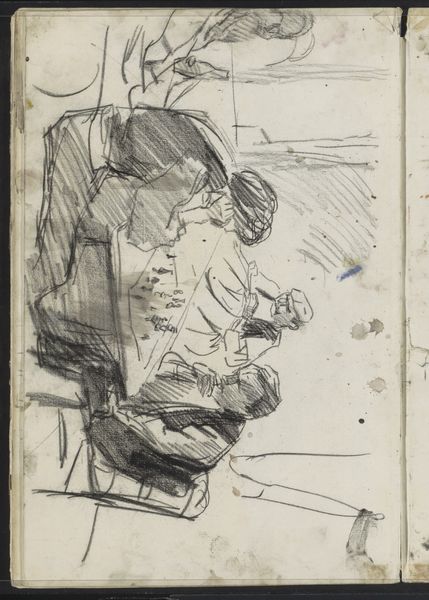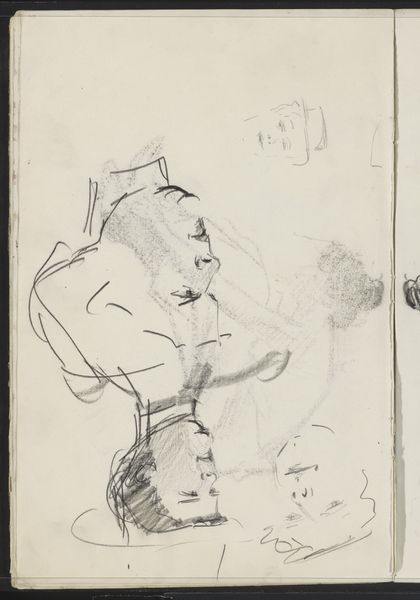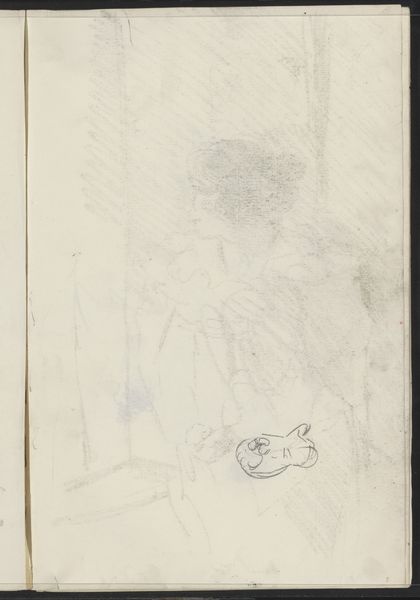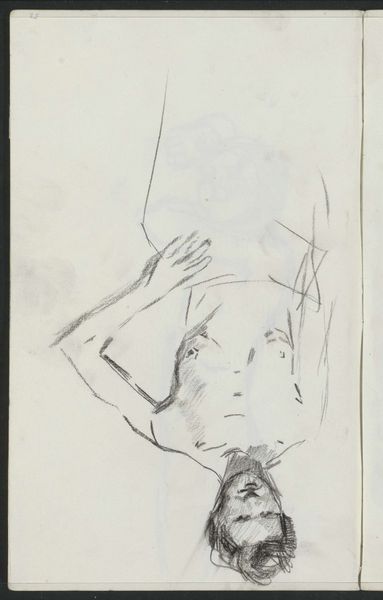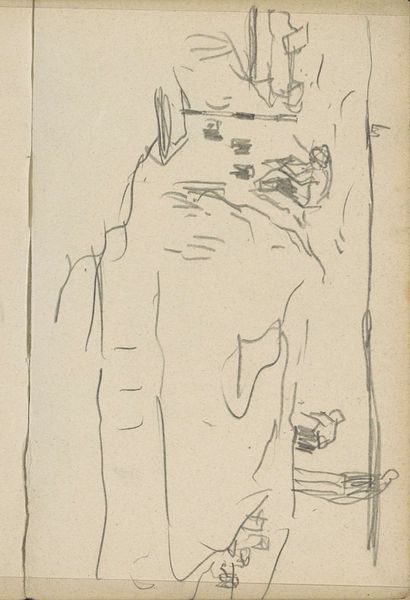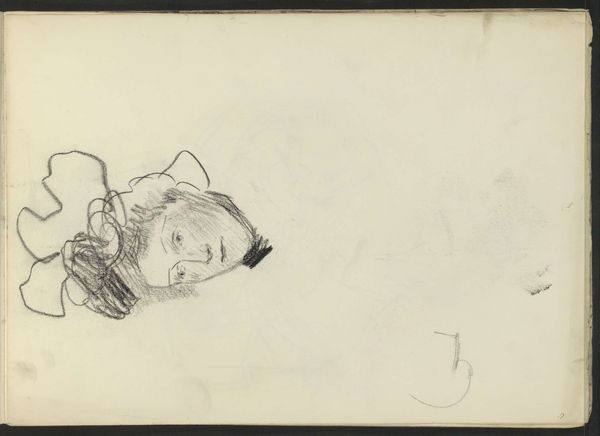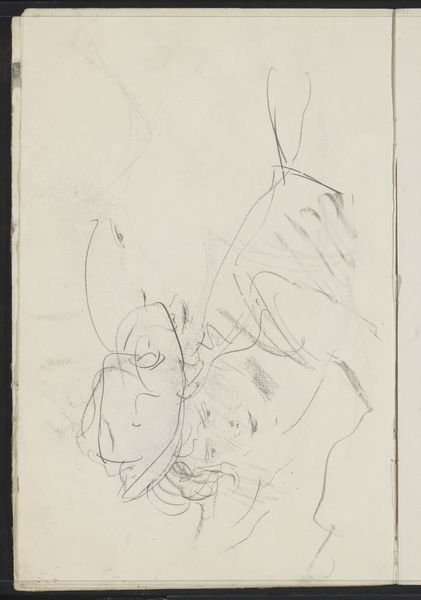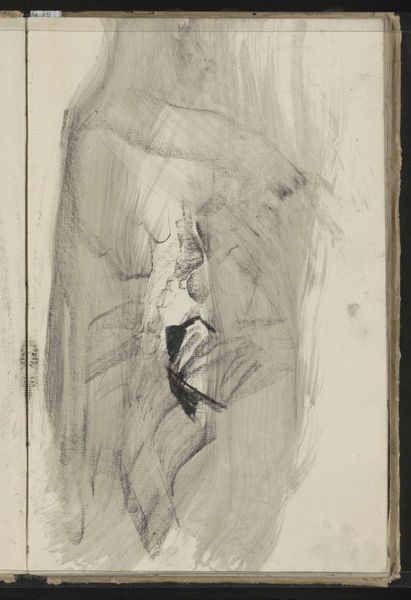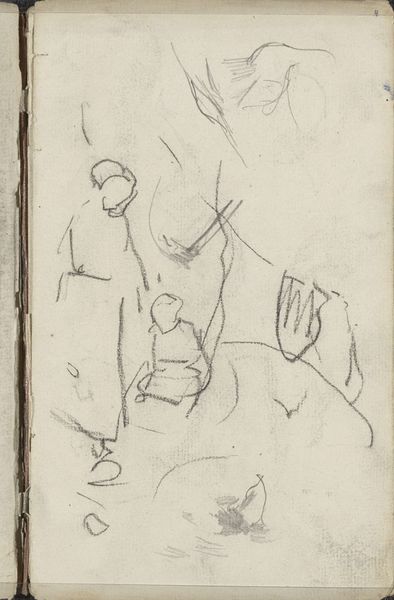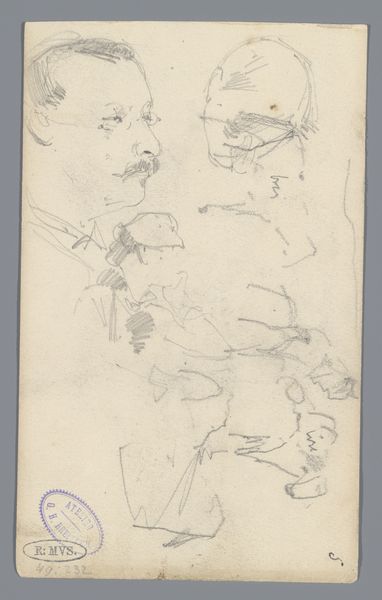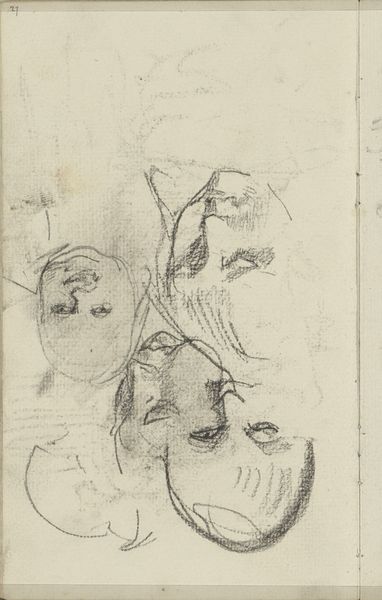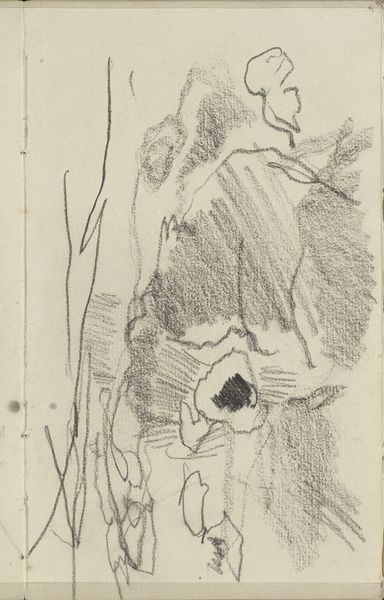
Copyright: Rijks Museum: Open Domain
Editor: So, this is "Twee liggende vrouwen en een vrouwenhoofd" by Isaac Israels, probably made sometime between 1875 and 1934. It's an ink drawing on paper. The quick, almost fragmented lines give it such an intimate, fleeting feel. What captures your attention most about this work? Curator: Well, for me, it's the raw energy. Israels captures something so fundamentally human with such seemingly simple strokes. The way he suggests form and emotion, especially in the central figure's face – it's like he’s baring their soul. Ever felt like someone saw right through you with just a glance? Editor: Totally. It’s vulnerable. I notice some parts are much more defined than others, like the face at the top versus the barely-there bodies. Curator: Precisely! It speaks to the Impressionist spirit, capturing a fleeting moment, a feeling rather than a photograph. Israels isn’t interested in meticulous detail; it’s all about the suggestion. Think about a half-remembered dream; that’s the level of reality he's aiming for. How does that resonate with you? Editor: That makes sense. So the incompleteness isn't a flaw; it's the point? It definitely adds to that sense of intimacy and even vulnerability. Curator: Absolutely. It also hints at the artistic process itself, doesn’t it? You see the artist thinking, almost sketching out thoughts and emotions on paper, letting some fade while others come into sharper focus. A peek inside Israels' creative world, if you will. What do you take away from seeing that process so bare? Editor: I guess it reminds me that art doesn’t always have to be perfect to be powerful. It can be raw and immediate, like a thought. Thanks, that was insightful. Curator: The pleasure was all mine. Perhaps next time we can ponder on what those women might be dreaming about?
Comments
No comments
Be the first to comment and join the conversation on the ultimate creative platform.
